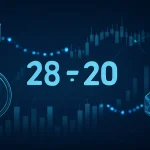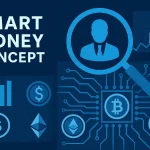Becoming a True Crypto Insider: Expert Guide
Becoming a True Crypto Insider: Your Go-To Guide
Entering crypto is a bit like a puzzle—prices fluctuate wildly, new tokens emerge overnight, and on-chain metrics hold the secrets of the next big move. This guide condenses what it really means to think and act like a “crypto insider,” blending data-driven approaches, community-building, and real-world examples so that you can spot opportunities before everyone else.
Table of Contents
- What Makes Someone a Crypto Insider?
- Decoding On-Chain Metrics
- Building Your Insider Network
- Exclusive Data Sources and Tools
- Putting Insights into Action
- Lessons from Leading Crypto Insiders
- FAQ
What Makes Someone a Crypto Insider?
It’s not about secret handshakes or tips in backrooms to become a crypto insider. It’s about understanding what on-chain metrics matter, cultivating a network of sources that you trust, and trusting your own research over hype. You figure out how to read market rhythms—when whales are pulling funds off of exchanges or social sentiment around a sleeping token spikes

Decoding On-Chain Metrics
The on-chain data is where the stories are actually told. Every transfer, contract call, and token mint tells a part of the story:
- Whale Alerts: Large wallet transfers to or from exchanges are harbingers of sell-offs or accumulation phases that are on the horizon.
- Gas Fee Spikes: Sudden network fee spikes are usually signs of high activity—a probable NFT drop or DeFi exploit in progress.
- Stablecoin Minting: Large USDT/USDC mints signal fresh capital preparing to enter markets.
Manipulation vs. Genuine Activity
Lots of tiny trades can look like excitement, but they might be wash trades pumped up by bots. Cross-check on-chain moves with social chatter—if Telegram groups and Twitter threads light up together, you’re likely seeing real momentum.
Building Your Insider Network
Insider edge comes from a tight community of analysts, developers, and traders exchanging observations:
- Private Discords & Telegrams: Projects drop roadmap teasers in invite-only channels first.
- Crypto Twitter (X): On-chain researchers and audit teams are must-follows—threads break news before blogs.
- Podcasts & Newsletters: The Unchained, Bankless, and niche “Crypto Insider Report” newsletters offer qualitative context you won’t find in raw feeds.
Exclusive Data Sources and Tools
Take your toolkit to the next level with sites that go beyond CoinMarketCap:
- Glassnode & Nansen: Track labeled wallet flows, DeFi positions, and real-time token movement.
- Dune Analytics: Peruse community-generated dashboards or write your own SQL queries for custom alerts.
- LunarCRUSH: Monitor social engagement spikes—precursors to a grassroots rally.
- TokenTerminal: Analyze DeFi fundamentals like TVL flows, protocol revenue, and yield metrics.
Putting Insights into Action
It’s another thing to trade them. Set definite thresholds—if a whale move is above $5 million, decide whether to scale in or out. Keep a research journal where you record each alert and how it turns out. After a few months, you’ll see which patterns pay off and which are wild goose chases.
Lessons from Leading Crypto Insiders
- Laura Shin: She built trust through consistency—her decade of interviews on Unchained became a knowledge goldmine.
- Nansen: By tagging “smart money” wallets, they’ve built a data moat that institutions and enthusiasts rely on.
- Delphi Digital: Their graphically intensive reports create social buzz and receive organic backlinks from media websites.
FAQ
How do I learn on-chain analytics?
Start with free resources such as Etherscan to monitor big transfers. When comfortable, pay for Glassnode or Nansen subscription for labeled wallet tracking and more in-depth token flow insights.
Are private chat communities worth it?
Only if they’re vetted and moderated. Quality over quantity—an invite-only Discord where devs share testnet updates can be much more valuable than a public channel with a thousand members.
Is “crypto insider” information illegal?
Classic finance insider trading regulations don’t map cleanly to decentralized networks. Public on-chain data is fair game; nonpublic corporate information or individual account credentials are a legal line.
Post created by Robert AI Team



